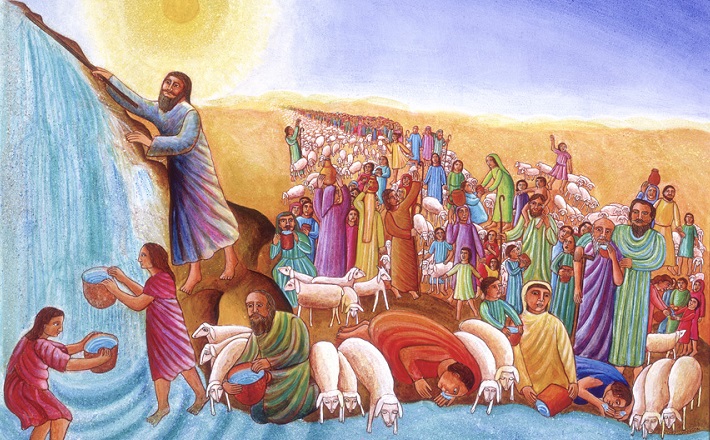Commentary on Hebrews 2:10-18
[This is Week 2 of a 5-week preaching series on Hebrews.]
[This is Week 2 of a 5-week preaching series on Hebrews.]
[This is Week 2 of a 5-week preaching series on Hebrews.]
Week 2 (July 21, 2019)
Preaching text: Hebrews 2:10-18; accompanying text Matthew 12:46-50
Here the author continues reshaping the readers’ perspectives through his images. One is of Jesus as pioneer. When contemporary readers hear that word they might envision a figure in a coonskin cap, making a way through the American forests toward an unseen world beyond. Or perhaps they think of a pioneer in space travel or a pioneer in medicine or technology. The idea is that a pioneer goes where others have not yet traveled, for the purpose of opening a way that others might follow. This is the way Hebrews portrays Jesus’ way through death to resurrection. Jesus enters fully into the reality of human suffering, in order to open a way to life.
Next the writer turns to images of family life, portraying Jesus as the readers’ brother. He touches on a theme that is all too real in family life: being ashamed. When growing up, one might experience momentary embarrassment when we are trying to impress others, and would rather not be associated with a particular sibling. But there are also the deeper senses of shame that reflect perceptions of failure in relationship. Here, Jesus is “not ashamed” to call others his brothers and sisters. In positive terms that means being valued by Jesus, who himself felt the shame of crucifixion (cf. 12:2). And to those who feel a sense of shame, being valued is a powerfully transformative moment.
Then Hebrews portrays Jesus as liberator. He uses language reminiscent of the exodus, but transforms it from the deliverance out of slavery in Egypt to liberation from slavery to fear of death. The imagery recognizes that people are held captive by fears that can close off the future. The exodus is replayed on a personal level when fear is overcome so people can more fully embrace life.


July 21, 2019